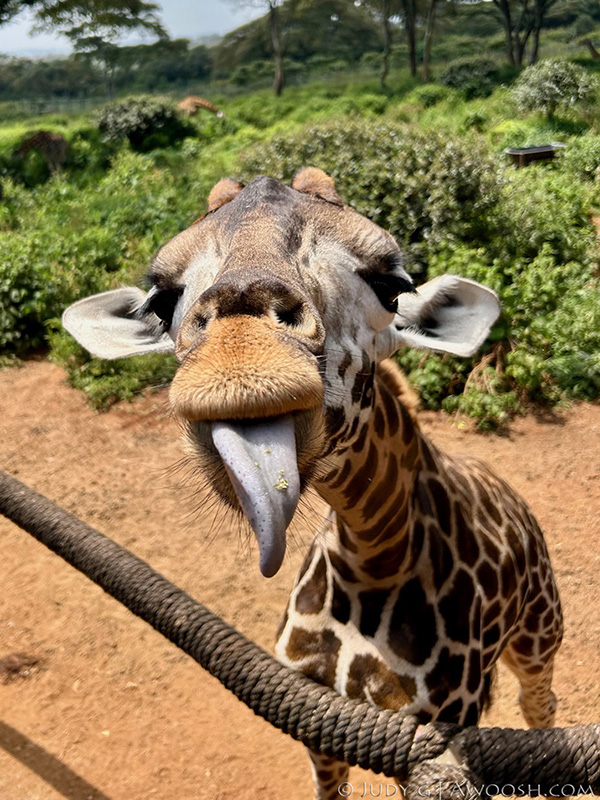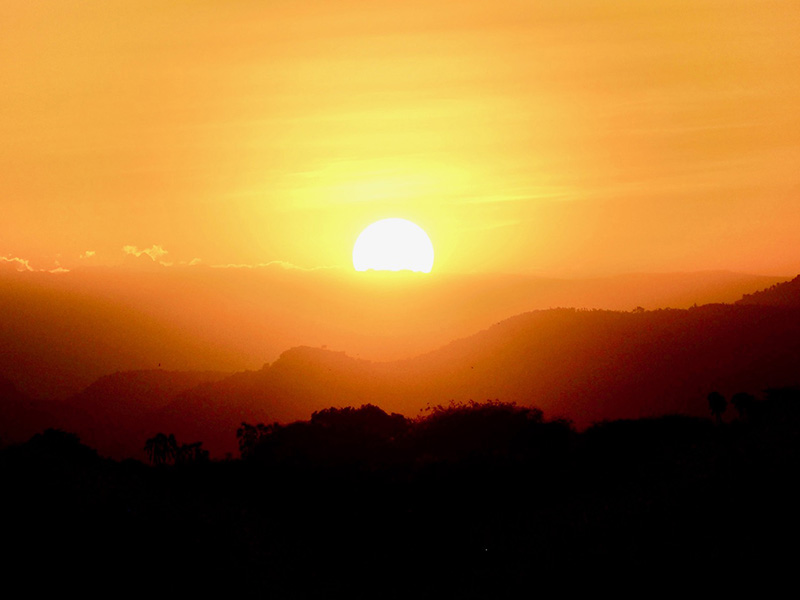
How do I describe the indescribable? Kenya is physically vast and diverse — arid, lush, flat, mountainous, populous (Nairobi), unpeopled (Meru National Park), mystical (the indigenous Samburu), and at times bizarre (the animals). It’s both serene (the landscape), and cacaphonic (the birds). No matter where you go, it is a highly sensory experience.
And wild Kenya is a feeling — even harder to define — awe, a deep immersion into the natural world, the heartfeels of connection.
Like many things in life, adventures like this are best shared with friends, and to that end, the trip was planned and a gang was formed. The idea was to put together a group of 12 – which would create two groups for the usual 6 seater safari vehicles, and provide some economies with the chartered 12 seater intra-Kenya bush flights. Everyone in the group knew some of the others before the trip, and over the span of our adventure together we all became friends for life.
In the end, one couple sadly had to drop out very late in the day, and so we numbered 10, and all had a bit more room to boom (and a welcome bit of extra luggage allowance on the bush flights too). Note to self: having cancellation insurance for a big trip like this is probably a good idea. Our group was two women, who both swiped right in the roommate search (a single supplement is very spendy in Africa), and the rest of us were traveling as couples. Right from the meet and greet dinner in Nairobi we knew that there was great chemistry. If you’ve ever been on a trip where there is a negative nelly, or a prince/esse, or someone who doesn’t play nice in the sandbox, you can appreciate how important it is to travel on a trip like this with people that you enjoy. There’s a saying in the dive world – on every dive boat, there’s an arsehole, and if you can’t figure out who it is, it’s probably you bud ;^). But on this trip, no arseholes were evident, other than of the animal kind (I’m looking at you elephants, baboons, warthogs et al).
There were some clear criteria established for this trip — firstly, that we stay within Kenya, and that the connections between the camps be land (game) drives and/or bush flights, so that we could avoid the stress of transiting through a major hub, and in doing so, being yanked out of the wilderness experience. A few of us had been to Africa on a previous trip in 2018 — which was effectively a sampler, on which we visited three different countries (Zimbabwe, Botswana & South Africa), all in 11 days. Much as we loved it all, we did spend a lot of time in transit, and we had to return to Johannesburg and overnight twice there near the airport in order to make the connections to other areas. So this trip was imagined to avoid that kind of busy-ness. Secondly, the wish was that the experiences be diverse – to explore different parts of Kenya, with different landscapes, cultures, and different concentrations of animals. Thirdly, that we stay in small, eco conscious camps – not posh, but very comfortable, with great game viewing, and not too many other operations in the same area (it’s very disheartening to see a big fleet of four wheelers racing to converge on and then surround a wild animal). Finally, we were looking for camps that had a significant social enterprise component in their business model — that is, that they hire from the local communities in which they operate, and that they also use some of the revenues from their camps to significantly help to support education, health care and conservation in those areas.
We trusted Kirsten Treais of Amazing Adventures, a US based dive and Africa specialist, to tick these boxes and put together an itinerary for us. She hit it out of the park in helping us to select the three camps that we visited. In turn, she engaged Cheli & Peacock in Kenya, who took fantastic care of handling us on the ground while we were there. There were a lot of dots to connect with us all dribbling in and leaving Kenya at different times, most with various add ons in Nairobi and beyond, and it all went seamlessly.
I’m going to share some photos from our time in Kenya in this trip report — gawd knows, despite my best intentions to not have my head in the camera too much, I could not help myself, and I took many. I’ll also write a bit about each location where we stayed, in the hopes of sharing some useful and/or interesting information, and perhaps inspiring others to try to make a similar trek to Africa. It is the trip of a lifetime.
Nairobi
We found that Air France had the most efficient routing and best fares between Vancouver and Nairobi for us, with a snappy connection in Paris. Due to the vagaries of internet algorithms (damn you technology!), apparently Air France knew I was zeroing in on the best dates for us, and the maudit bâtards then jacked up the prices for these dates when I went in to close the deal. Grrrrrr. Rather than pay their usurious upcharge for the ideal dates, we decided to go two days earlier to get a much better fare, and so we had a couple of extra nights in Nairobi before we flew out to the first camp, and we also decided to add an additional night there on the back end. For two of those nights at the beginning, and for the one night at the end, a few of us stayed at the wonderful Karen Gables B&B, which is located in a quiet suburb of the city. The experience was great – a beautiful vintage-style house with a small number of comfortable ensuite guest rooms, and with ample common areas both indoors and outdoors for lounging and relaxing. A delicious breakfast was included, and the kitchen also produces a fantastic dinner (à la carte). An outdoor pool, peaceful and expansive gardens — this place is a gem, and I’d highly recommend it if you like small inns.
A note regarding the images in this trip report – you can click on any image to see a larger version.
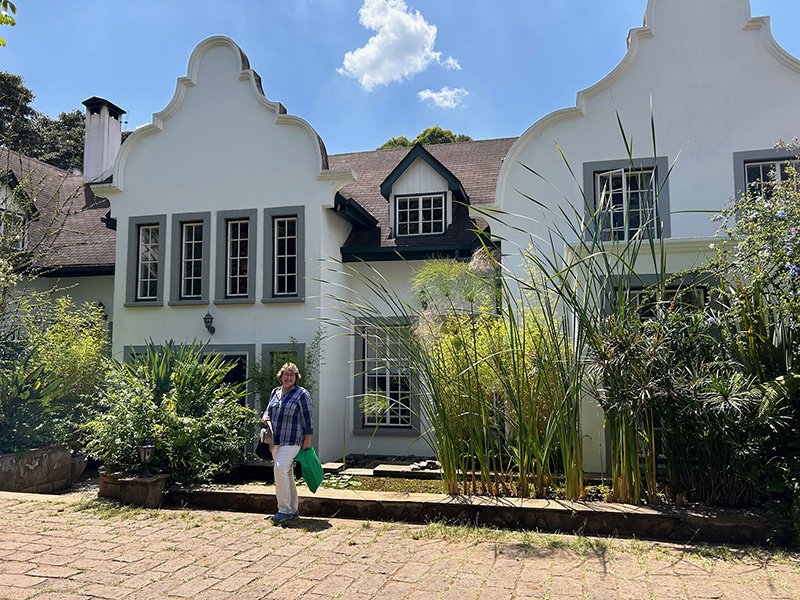
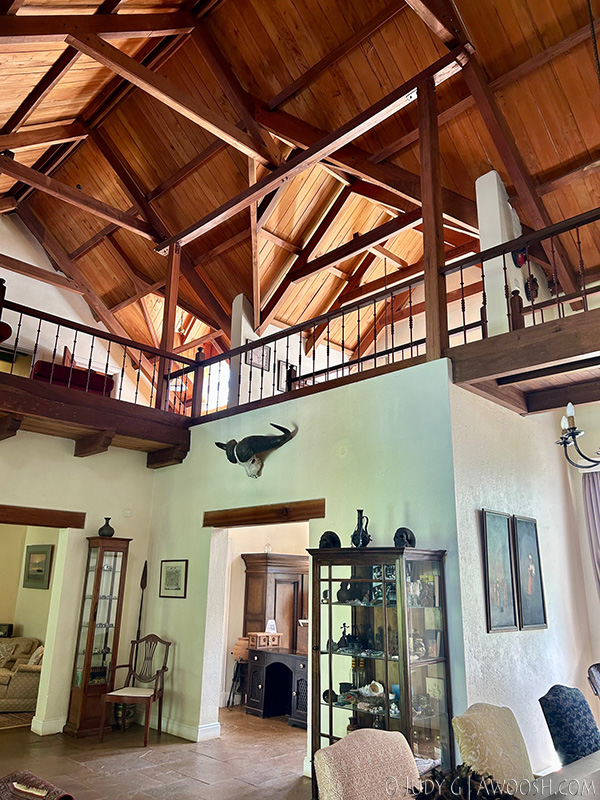
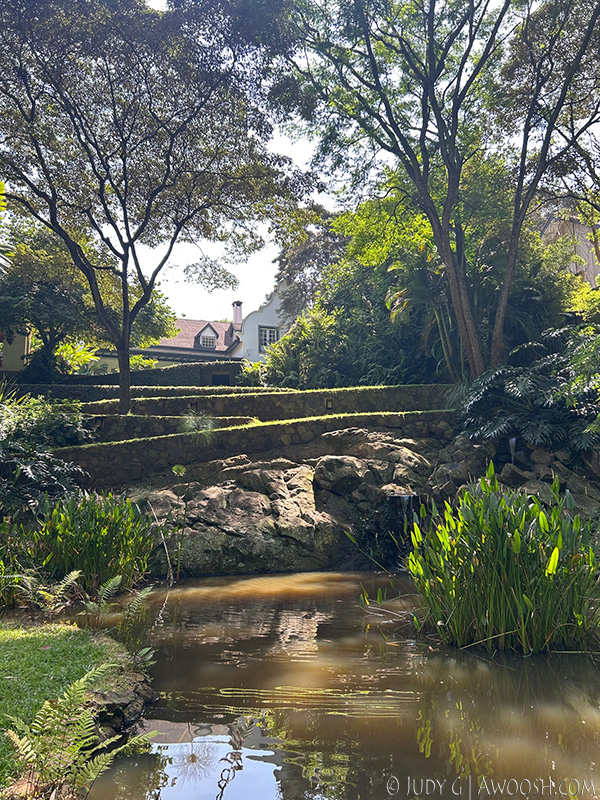
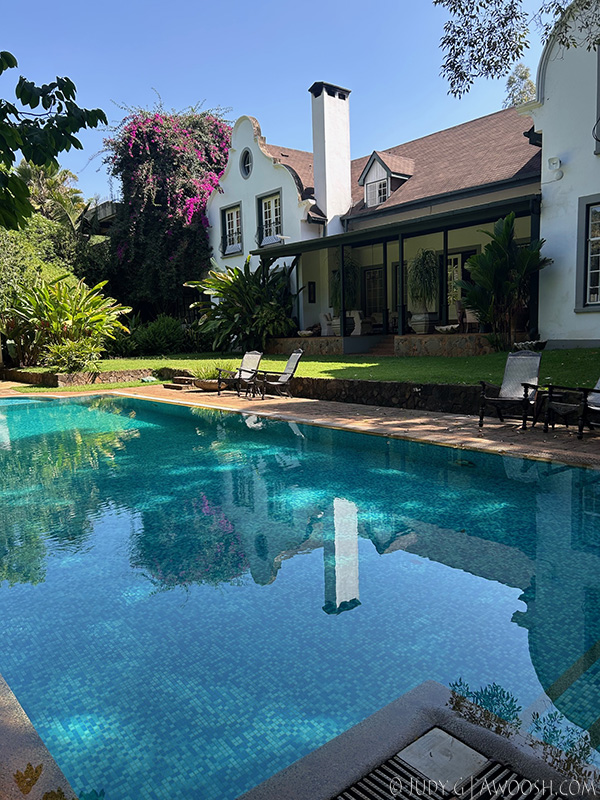
Unfortunately, Karen Gables was fully booked for our third night in Nairobi, and so we moved to Hemingways Hotel, which is also located in the suburb of Karen, very nearby. This is the place to go if you like a posh, grand, colonial-style hotel with impeccable service and rooms so large that you can get lost in them. It too has lovely gardens, a nice pool area, and both indoor and outdoor bar and restaurant options. We enjoyed a massage at their spa, and had a fun group dinner on the terrace where we all got to know each other. The (included) breakfast was also very good.
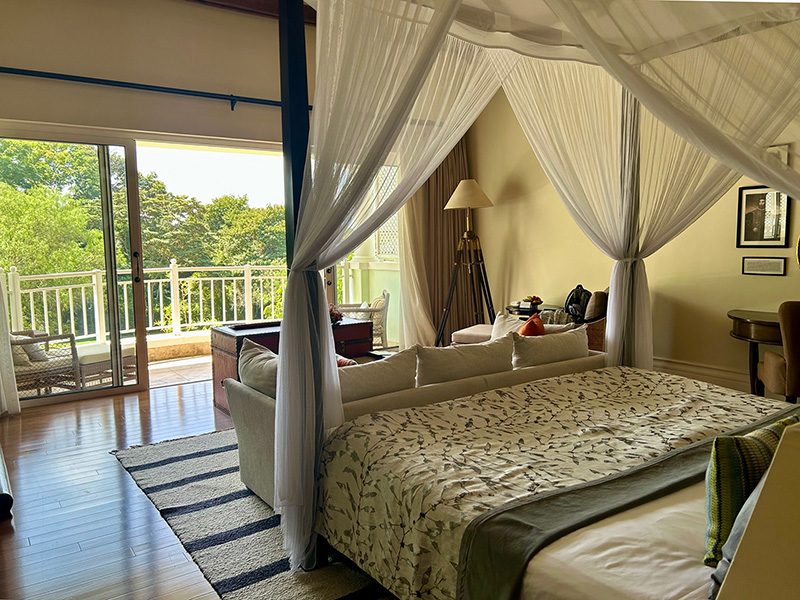
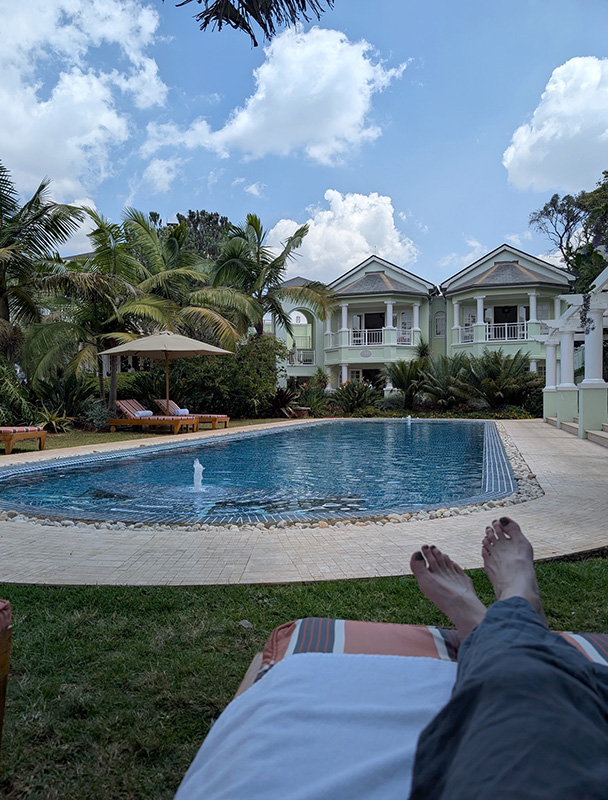
While we were in Nairobi, Karen Gables arranged for a driver to take us to the Giraffe Centre, where visitors are educated about the 3 kinds of giraffes that are found in Kenya (Reticulated, Maasai, and the Rothschild variety — which has been given an endangered status). It’s up close and personal; you stand on an elevated walkway and the friendly Rothschild giraffes mosey in to mooch the food pellets that are provided for hand feeding them. It was a cool experience, but the interactions with wild giraffes that we experienced at our second camp, Sarara, truthfully totally eclipsed it…
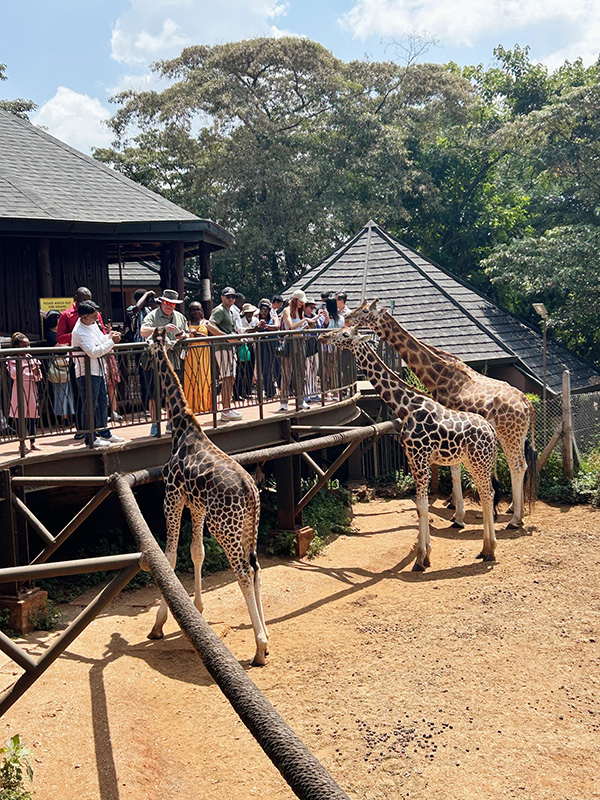
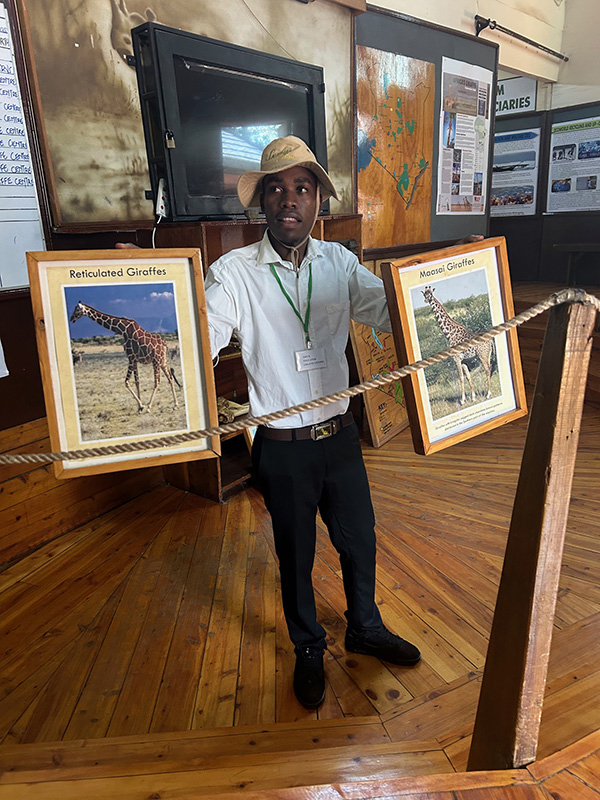
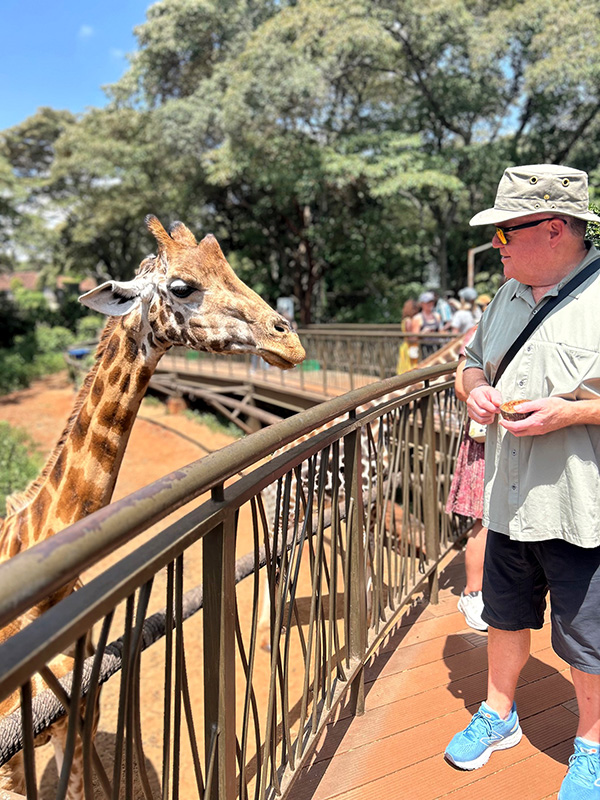
We also went to Kazuri, a bead making co-operative, where female artisans hand-make beads from Kenyan clay. The stuff that they create is quite unique and beautiful, and the on-site shop offers a very nice array of their beaded products.
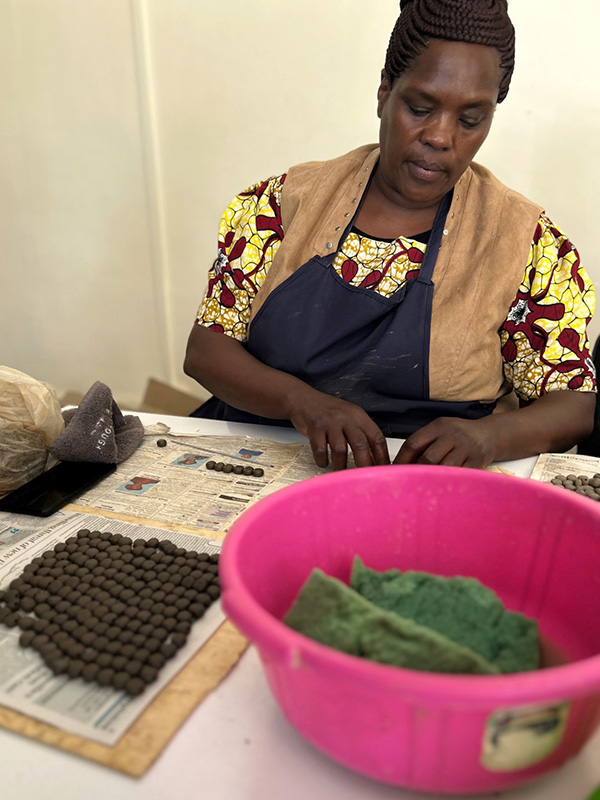
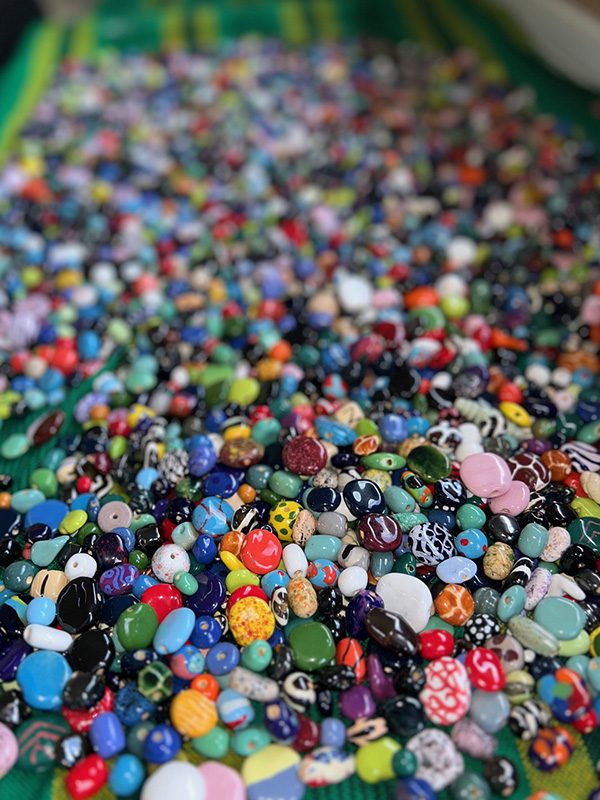
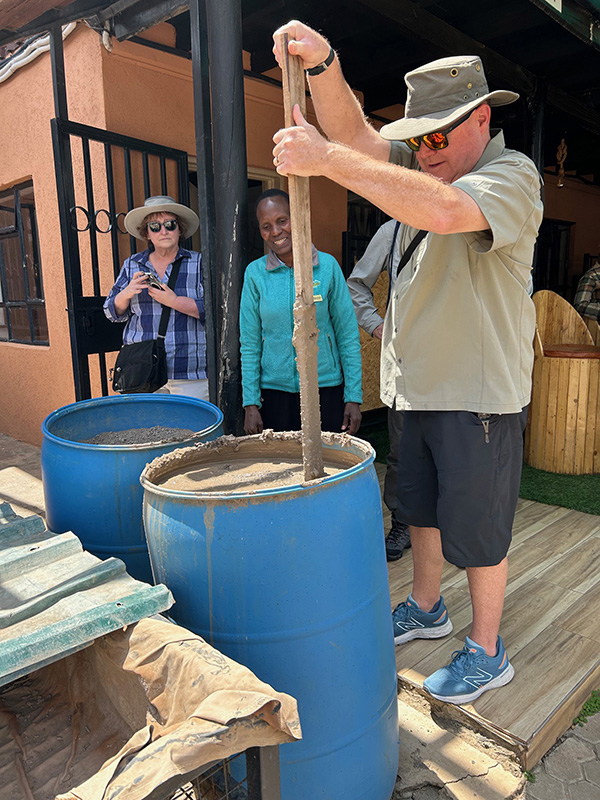
The driver then dropped us at another local multi-room artisan marketplace for a bit more retail therapy. We found Kenyan crafts to be very beautiful and reasonably priced, but in the fugue of jet lag we didn’t have much stamina for shopping.
It was a short and sweet stay in the outskirts of Nairobi.
Click here for Part 2 – Meru National Park — Elewana’s Elsa’s Kopje Camp

